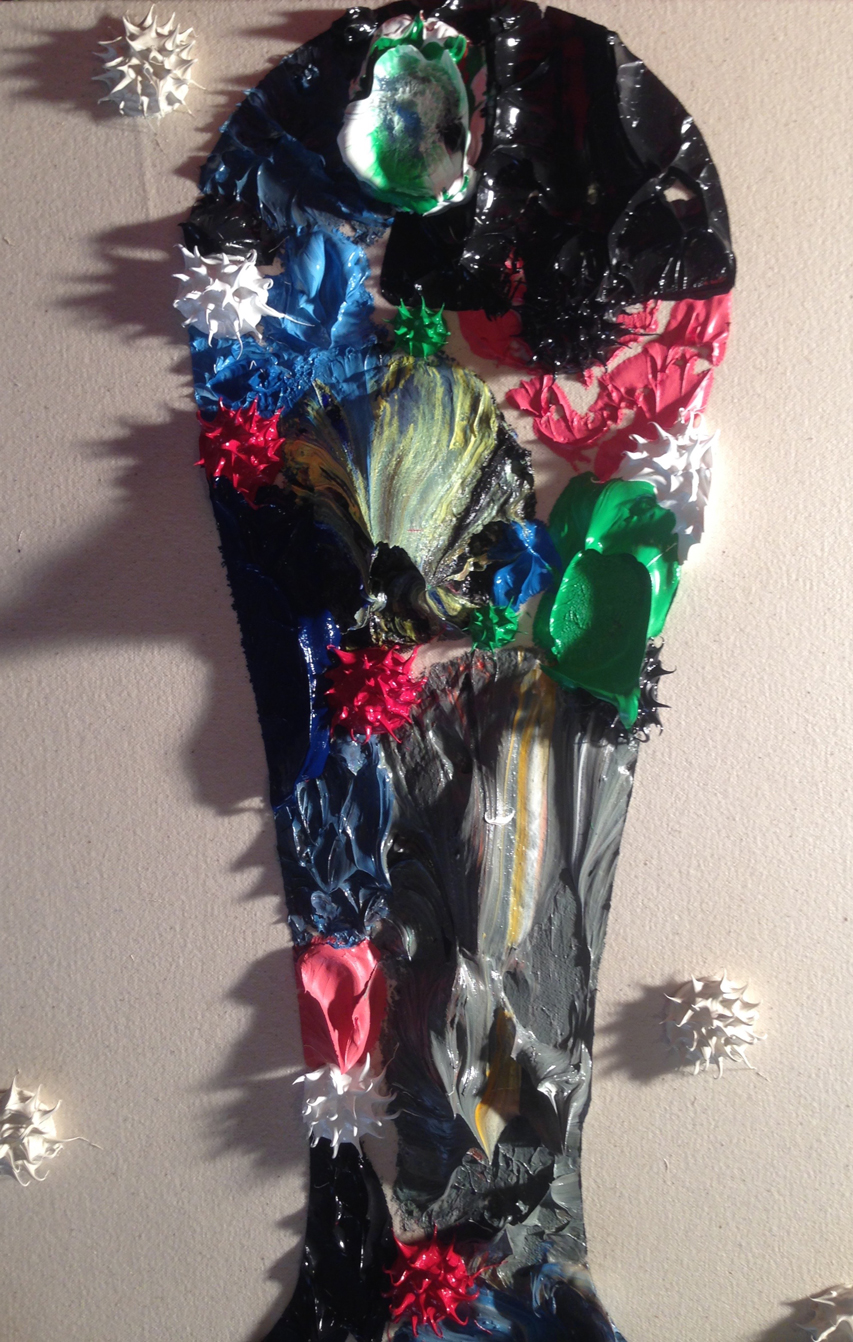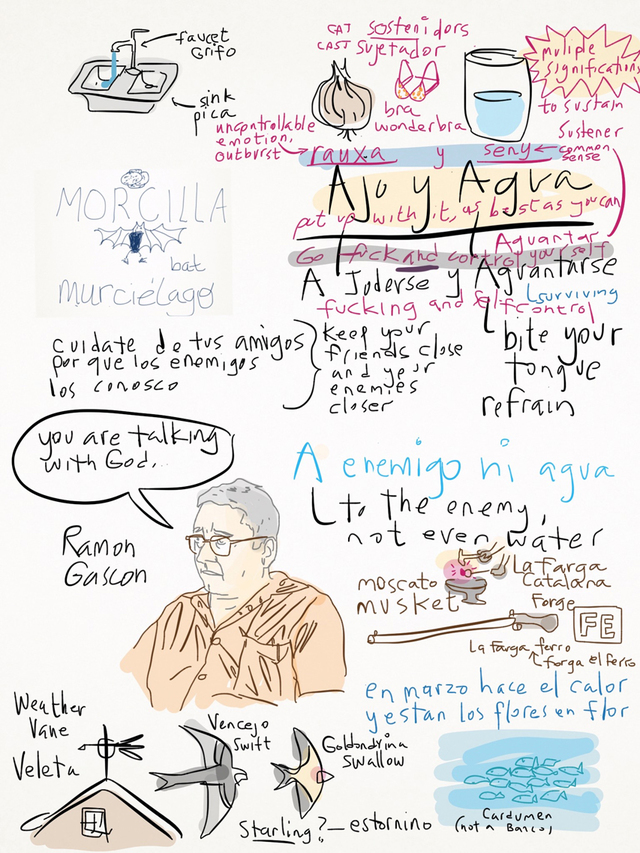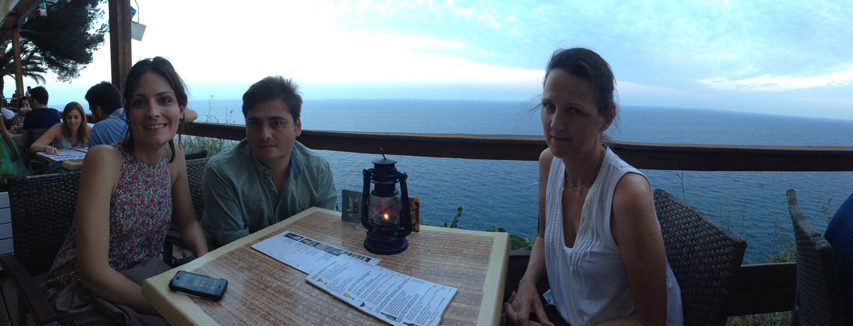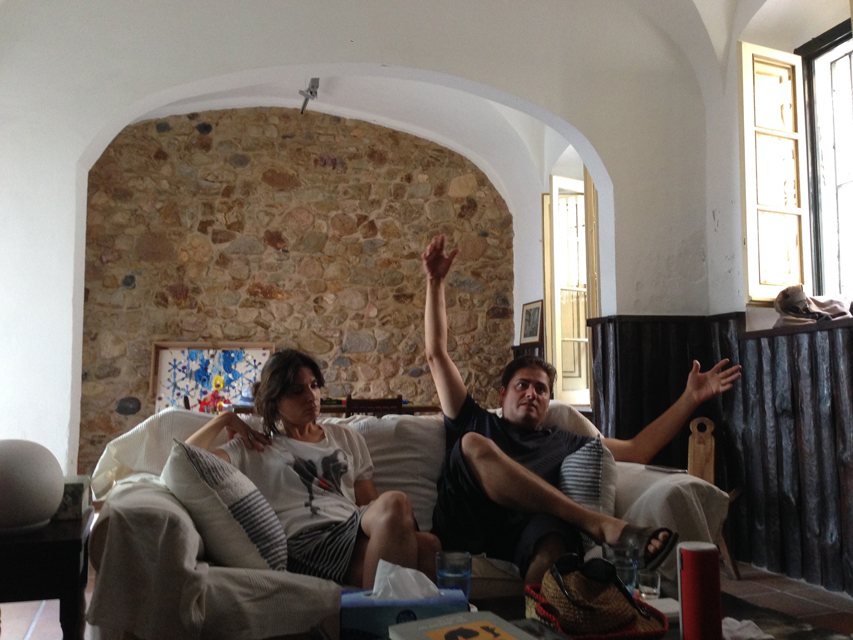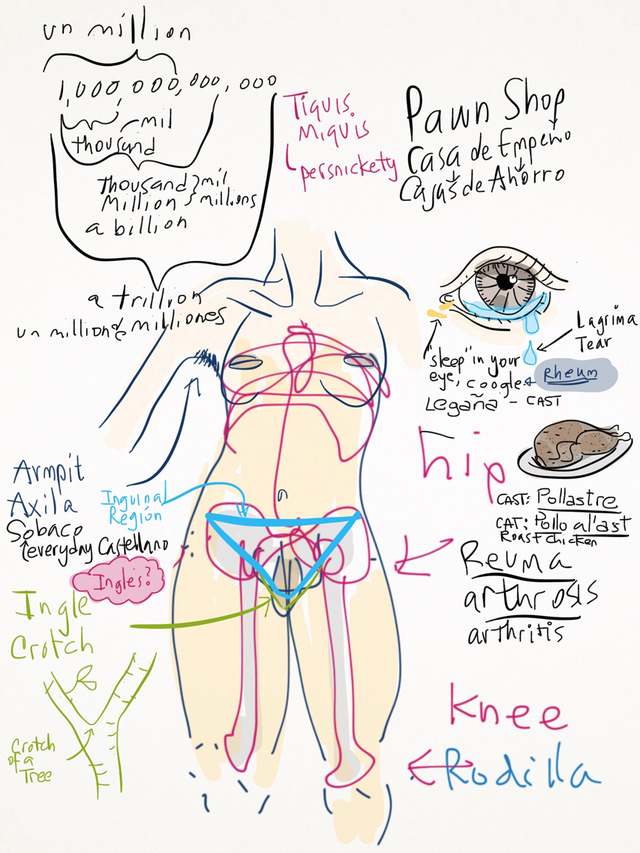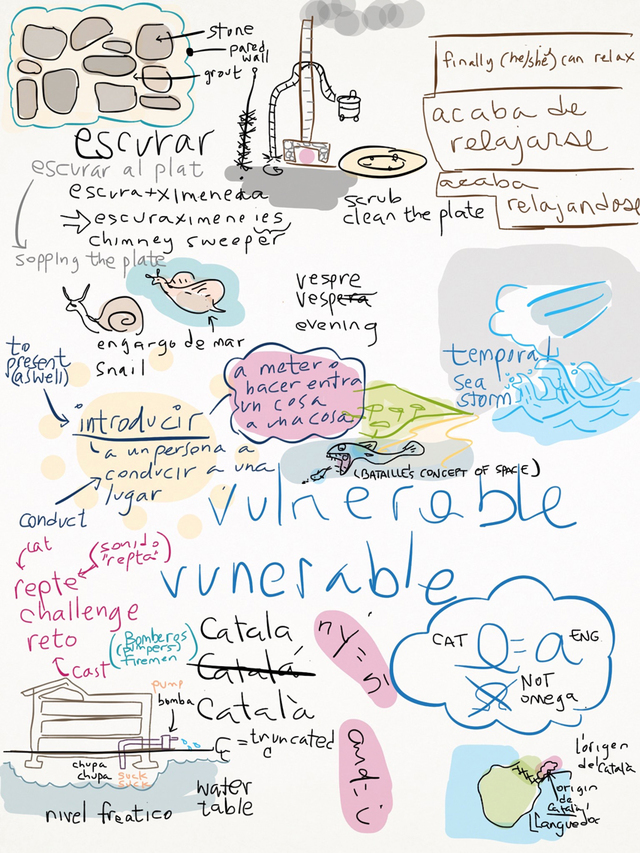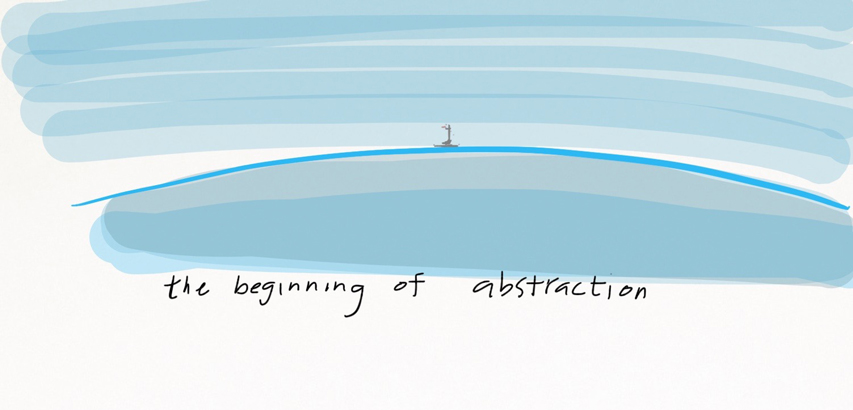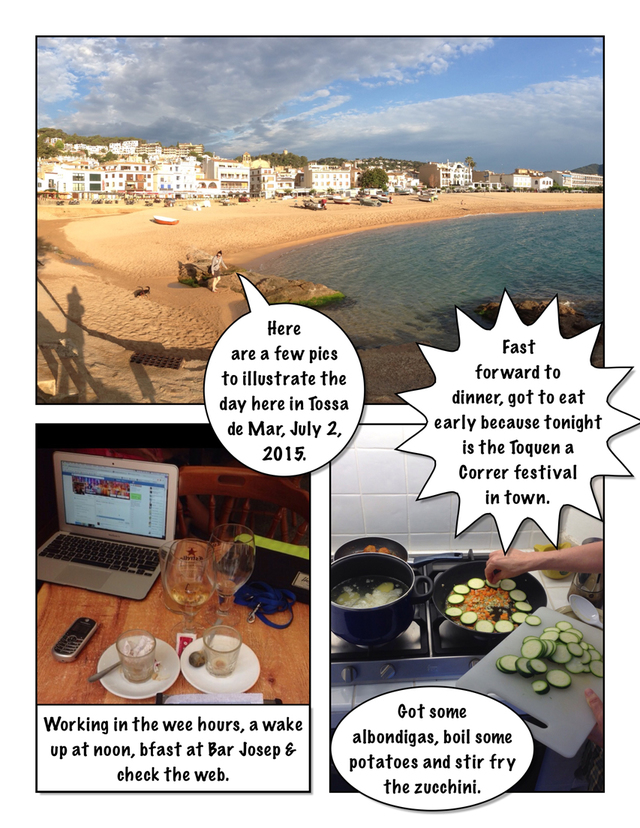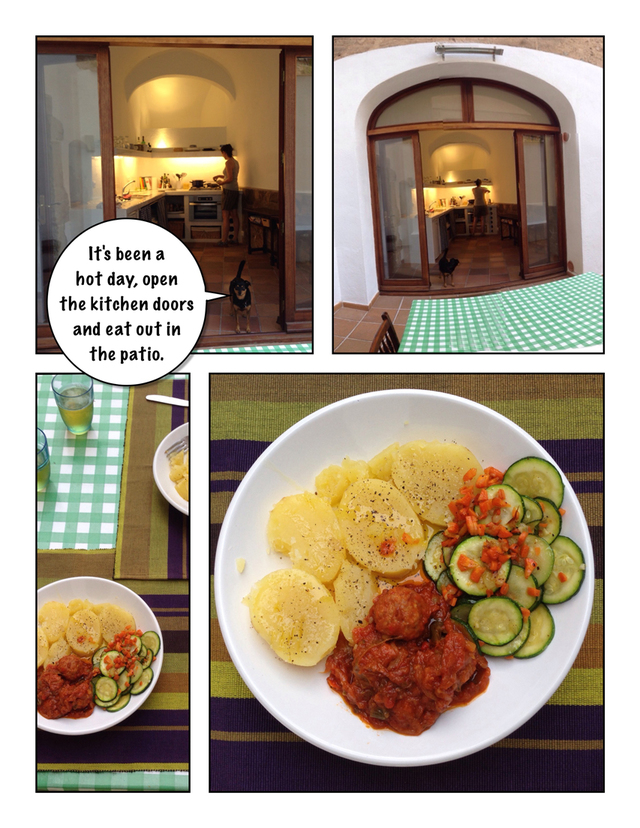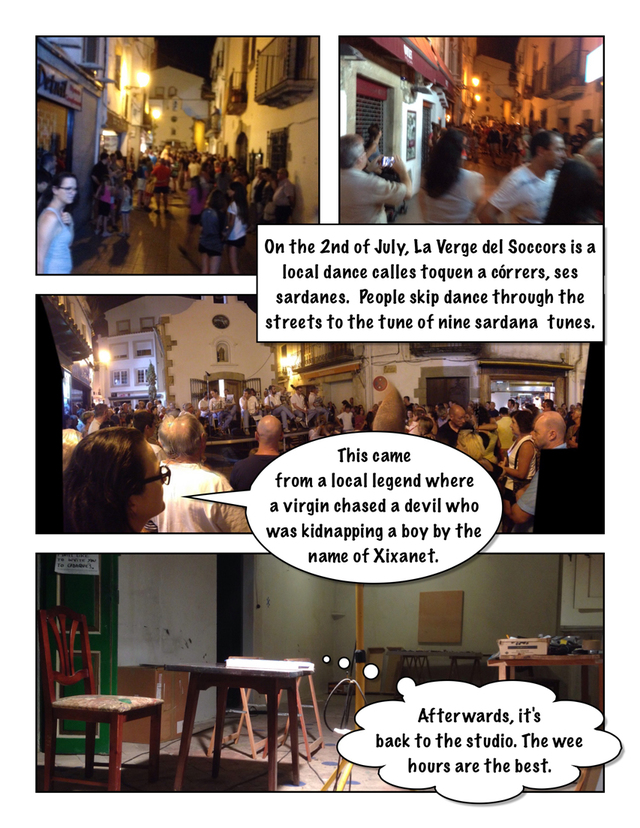July 30, 2015
El Vibora y RanXerox

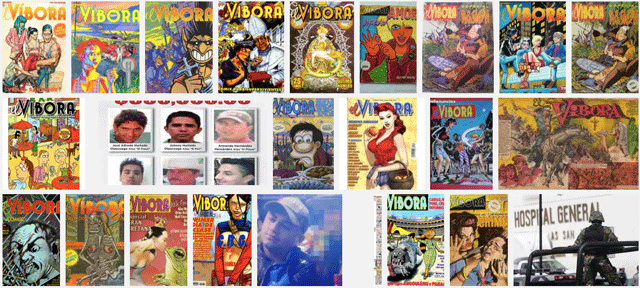
I was talking to my neighbor Tony the day about Catalan history and the timeline slew to the years just before and after the dictator Franco transitioned out of power and Spain opened up to the world. Whereas once the country was closed and controlled (I understate here how much this oppression was conveyed to me by my Catalan friends, my attempted descriptors had turned purple and turgid), once Spain became free and democratic, there was a massive explosion of expression. Massive. Eruption. Flip a lit match into a huge box of fireworks and magnify it into a national level.
Art exploded and in the city streets, underground magazines went aboveground. El Vibora was the prime alternative magazine of the day. The name is a subtle play on words. Vibora means viper in Spanish, also indicative of street life, specifically hard street culture, sex, drugs, rock & roll... or punk. "La vibora" is the normative designation of snakes and the replacement of "El" signified an honorific specification in the Spanish language (for example, if I wanted to talk about my friend Kiko as in a mark of honor, I would refer to him as "El Kiko).
One of the stand out recurring characters in El Vibora was an Italian creation, RanXerox. As I understand the story, RanXerox was invented, scrabbled together from Xerox machines and given as a gift to a teenage street savvy girl by the name of Lubna. Later, when she was mugged, her gift RanXerox was destroyed. Her benefactor put RanXerox back together and... oh hell, let this link tell the story:
Ranxerox was a birthday present for Lubna from some of her friends. Later, on the same day, some thugs were harassing Lubna and destroyed Ranx. The friends who built Ranx found out, they then repaired him, and set his aggressiveness levels up to the maximum amount. This explains why Ranxerox is always very brutal and destructive.
Now, James Cameron was said to have come up with his idea for Terminator after awaking from a dream in a hotel during a stay in Rome... only a few short years after RanXerox was created by Stefano Tamburini and Tanino Liberatore in their graphic novel series. I've looked online to see if anyone else suspects that some kind of intellectual property poaching was going on. No luck, so maybe I'm imagining things?
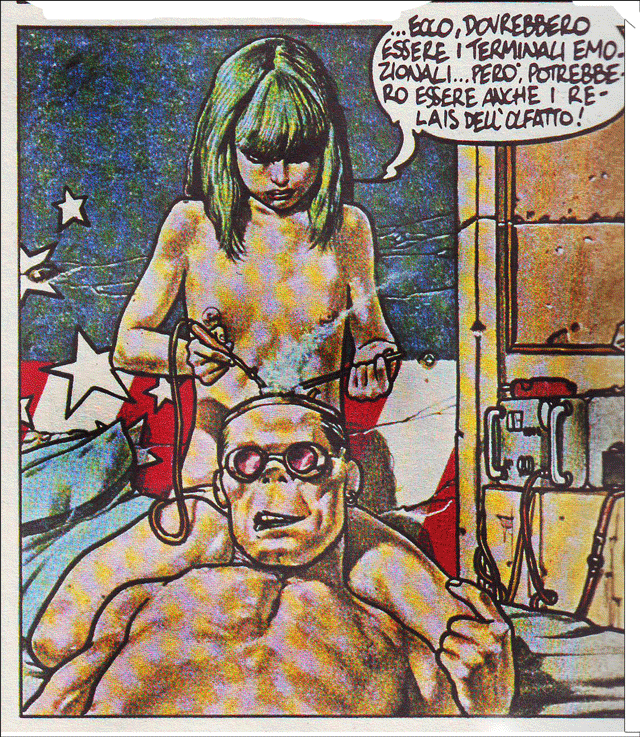
inverted and nested
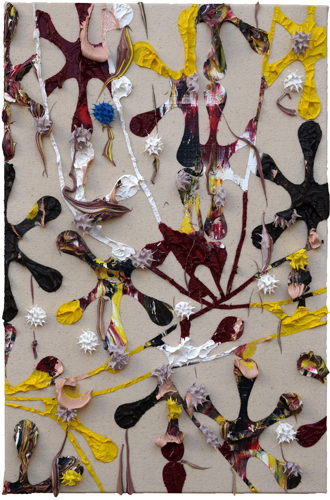
inverted and nested
2015
#499
46x30cm
Oil on Canvas
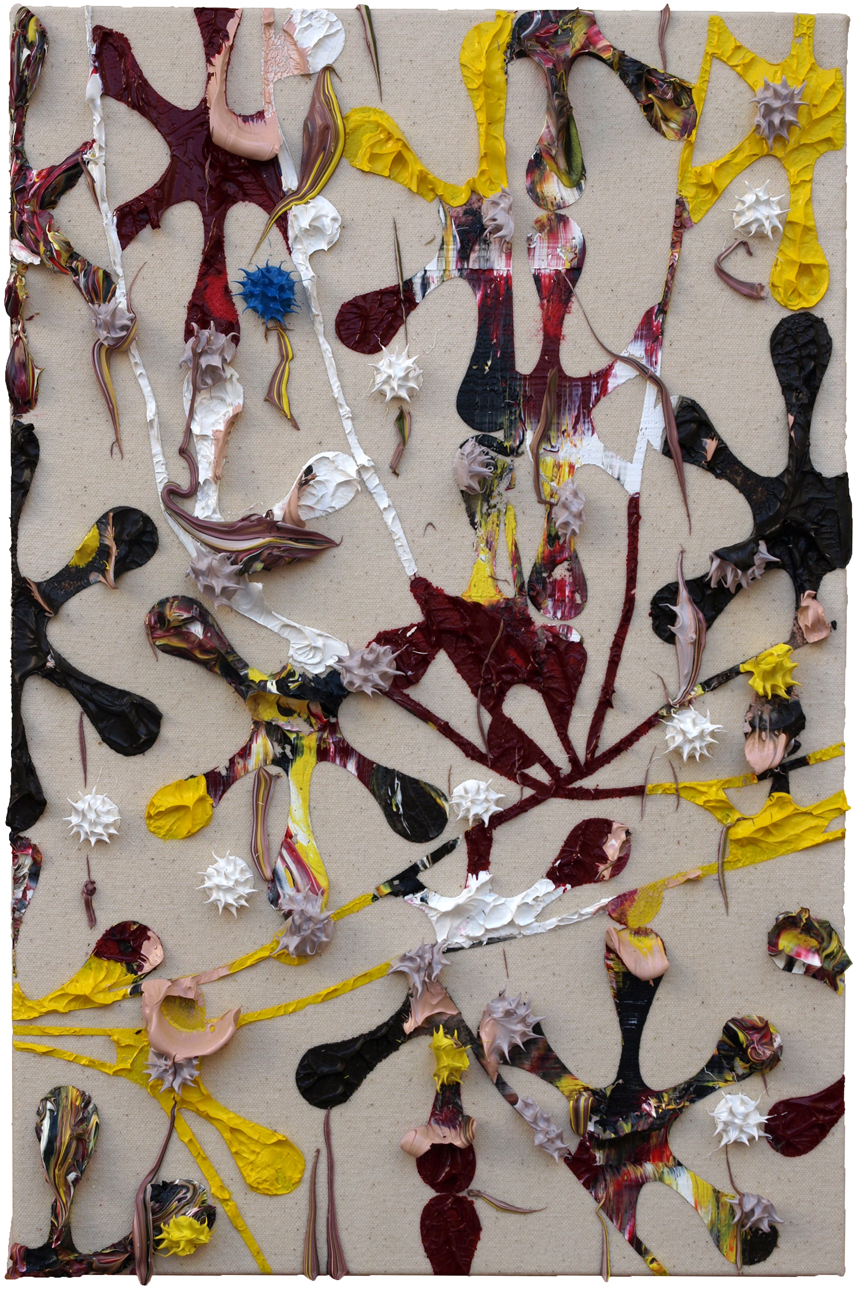
July 28, 2015
born Janus-faced as one
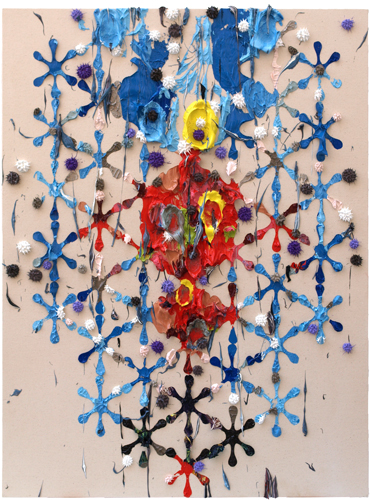
born Janus-faced as one
2015
#498
120x90cm
Oil on Canvas
Tossa de Mar, Spain.
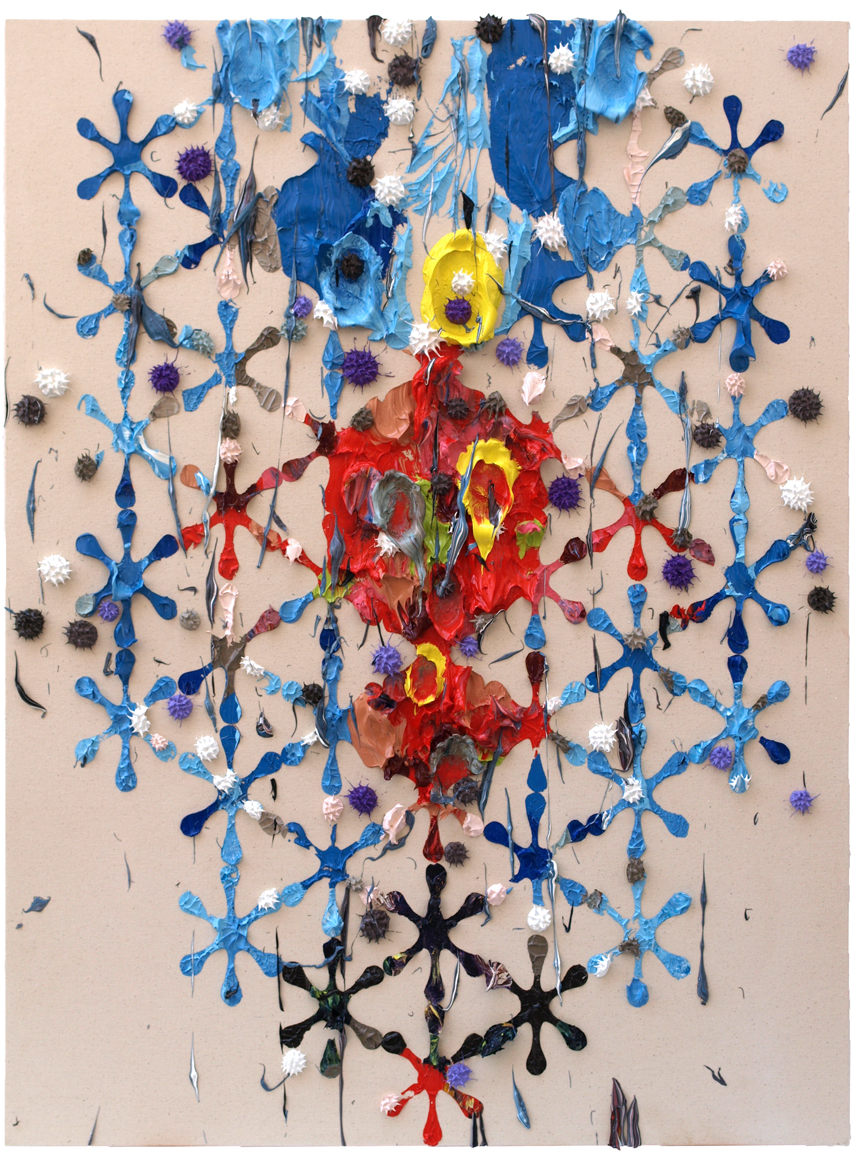
Friends visiting Tossa



Gerry Smulevich and his daughter Natalie at Codolar Cove with Stephanie (right), Gerry playing his guitar in two exposures for Nacho and Leslie Arnó at their terrace overlooking the muralla.
Cocina2
Favorite Spanish TV program in the house right now: Cocina2. A great tour of Spain, charming hosts, twins Javier and Sergio Torres, ambitious dishes artfully presented with a light touch.
July 26, 2015
Friends visiting Tossa
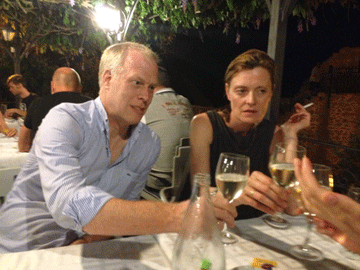
Dan and Natalia Hug toasting a fine night out to dinner (son Nikolai asleep in the carriage, off screen).
The Lookout

I. The Lookout.
Visualize, if you will: an ancient sailor dangling high atop a mast, watching the spires of his port city disappearing over the horizon. Add to this scene the smell of the sea, it's salty funk,, the cries of seagulls looking for fish in the ship's wake, the scrub of the wind on sunburned skin. The lookout's eyes are the captain's eyes as the shouts transacted from above and below. Let's imagine that this ship was the first of its kind, sailors bold enough to go past the reassuring littoral into the open sea where the more cautious of the tribe still safe at port warned that monsters swarmed out there and the far sea possessed an edge condition of an immense cataract into an abyssal oblivion. For the first time in human history, the port appears to evaporate from the streets to the skyline into an emulsion of sea and sky.
The horizon, a datum once thought to be absolutely flat, universally horizontal and level to a legal standard is now betrayed by what will later be understood to exhibit the faint attributes of curvature. Horizons were then and are now understood as an abiding fact of life. But they were then as now also known to be difficult. How amazing and destabilizing this curvature in its enveloping grandness must have seemed to this lookout! Horizons exist as a seeming fact before our eyes and yet are beyond our touch. Being beyond our touch, horizons abstract from us. They are abstraction in fact, seen as plain as the day and just as impossible to verify. While drawn with mathematical certainty, abstractions, like horizons are simultaneously about distance, a remoteness from observational data. We are drawn by them and to them, peril be dammed.
Conjecture is an opinion or conclusion formed on the basis of the horizon of incomplete information. There's no doubt that conjecture was a capacity exercised since the apes descended from trees, but there must have been a first moment -or a succession of faltering moments unto success- when conclusions were formed about a world whose scale extended past the immediate vicinity, towards a wider and even more absolute universe. Our five senses forms our experience. Much of the world lies beyond our immediate reach and in response, we create a model of it in our minds. With this model, we make predictions and our experience either confirms or falsifies our mental model. Our minds are architectures of conjecture, extrapolated cities and empires of inference and postulation.
A lifetime ago I was a sailor. It was the US Navy, my ship was a warship. It was first built as a destroyer leader that was renominated as a cruiser at the last minute when Washington decided to install a nuclear reactor as the power plant. In a crew of 500, my rate was an Operations Specialist in the Combat Information Center (CIC), a room behind he bridge kept dark and cold, the better to see and operate the radar screens and computer monitors. Sound powered phones connected the network of people responsible for reporting and processing this information and in the chain were the ship's lookouts: forward, port, starboard, amidships and aft. We charted our position at sea, projected our journey and looked out for ships and aircraft in our environment, we designated each of them as either friendly, unknown or hostile. A compass rose centered relative to the ship was the reference for the bearing provided to the contacts, their disposition and a range, course and speed were estimated and updated minute to minute. In the darkness of CIC was constructed an image, a model of the world. A chain of command was the conduit for the interpretation of this model and information flowed fast and free in both directions. The representation was tentative, subject to revision from moment to moment.
We drew the world, in pencil on glowing screens, on tracing paper lit above and below, as vector graphics in computer monitors. Bearing and range established points in space. Updated information revealed which points were stationary and thus features of the earth and which were features of mankind in movement. Bit by bit and byte by byte, movement revealed intention. The world forever evaded us and we employed architectonics of abstraction upon abstraction to create a facsimile of it, to draw it closer to us, even or especially as it fled our grasp.
barely scratched the surface
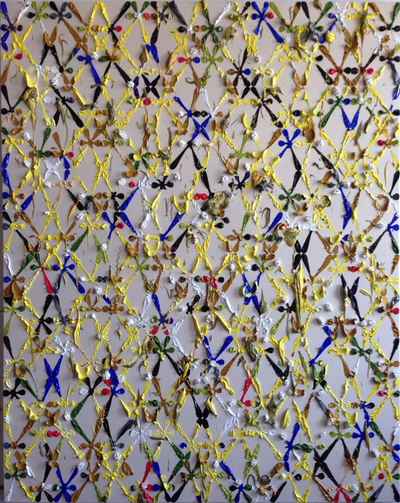
barely scratched the surface
2015
#497
60"x48"
Oil on Canvas
(NYC)
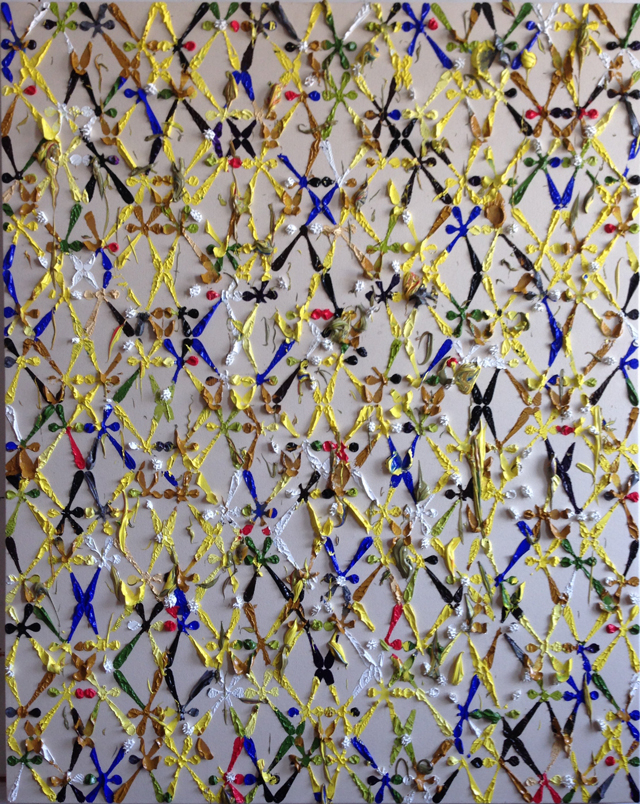
a cruel exposure
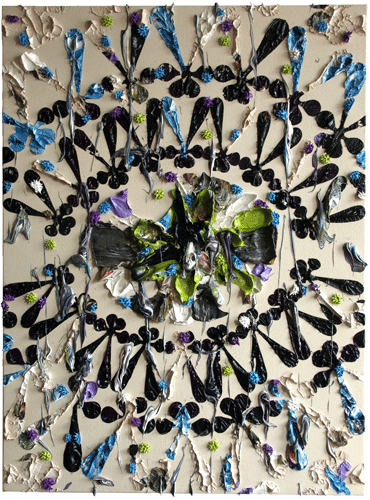
a cruel exposure
2015
#496
48"x36"
Oil on Canvas
(NYC)
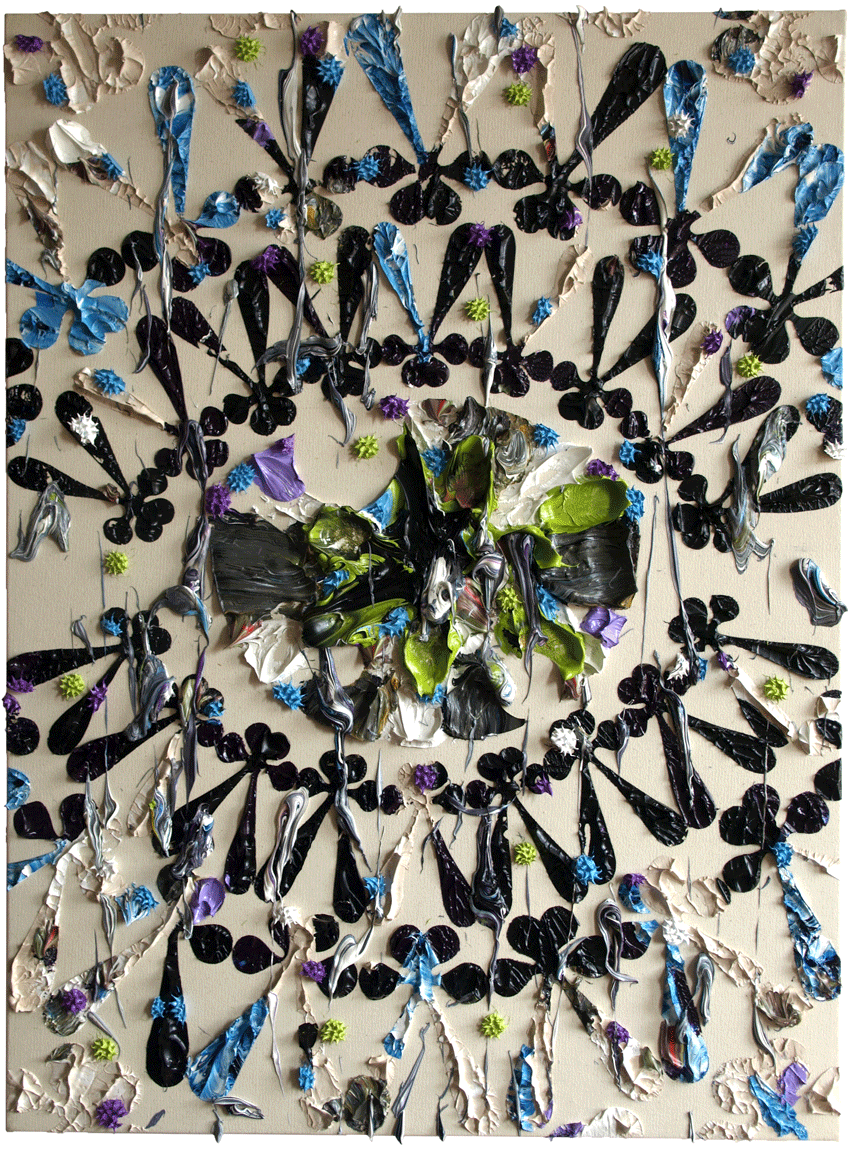
a surfeit of dimensions
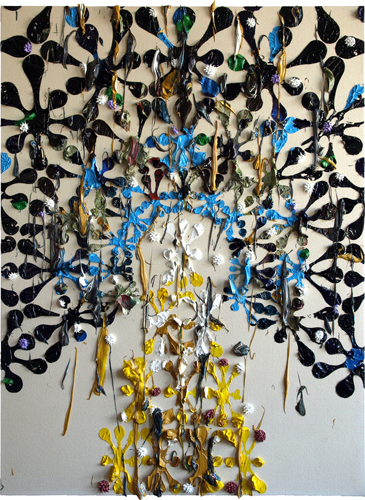
a surfeit of dimensions
2015
#495
48"x36"
Oil on Canvas
(NYC)
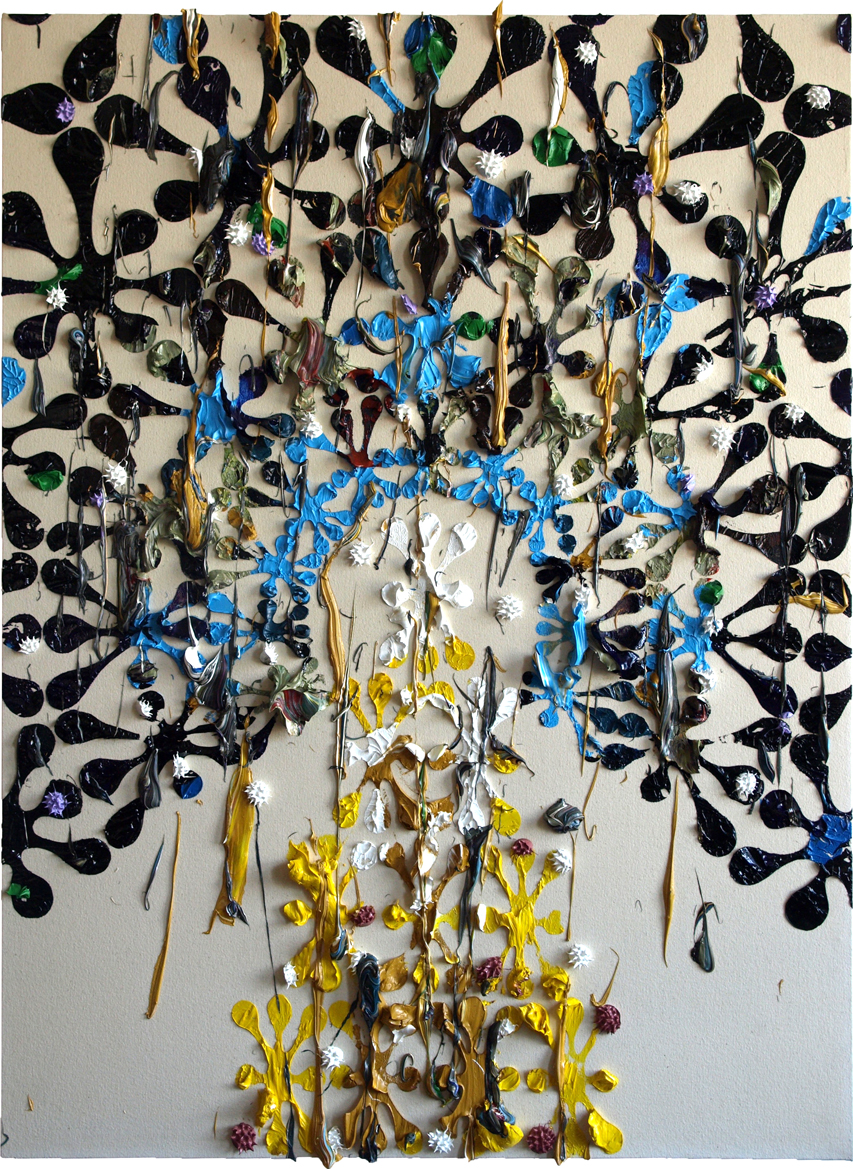
Bridge, Combat!
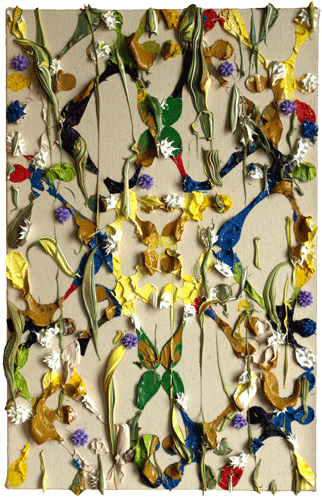
Bridge, Combat!
2015
#493
18"x12
Oil on Canvas
(NYC)
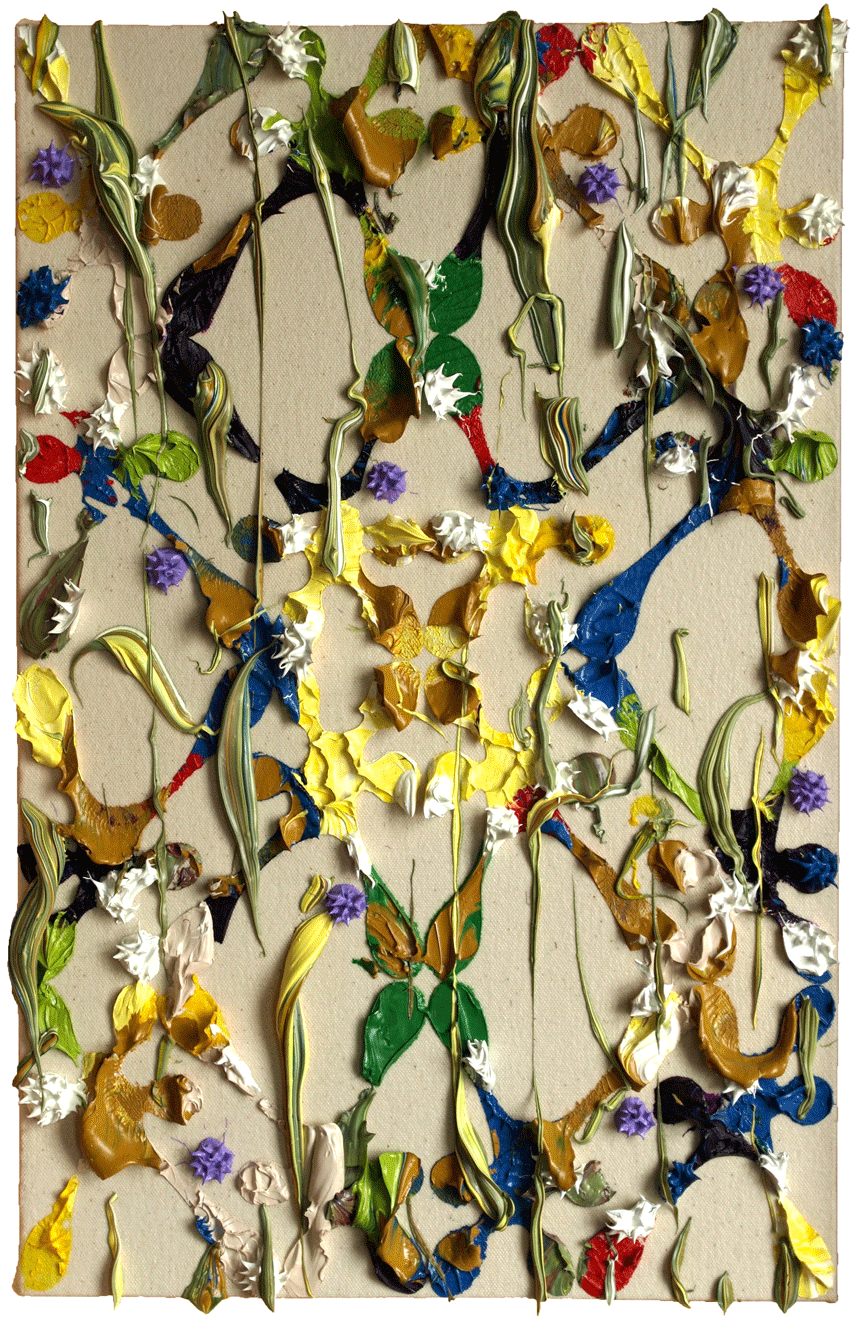
up for grabs
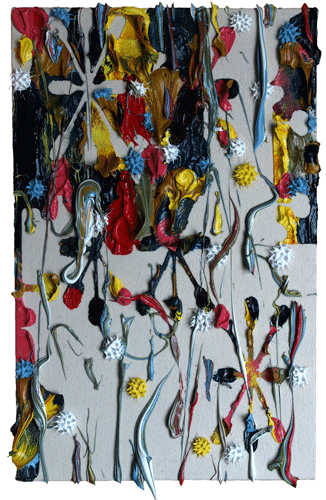
up for grabs
2015
#491
18"x12"
Oil on Canvas
(NYC)
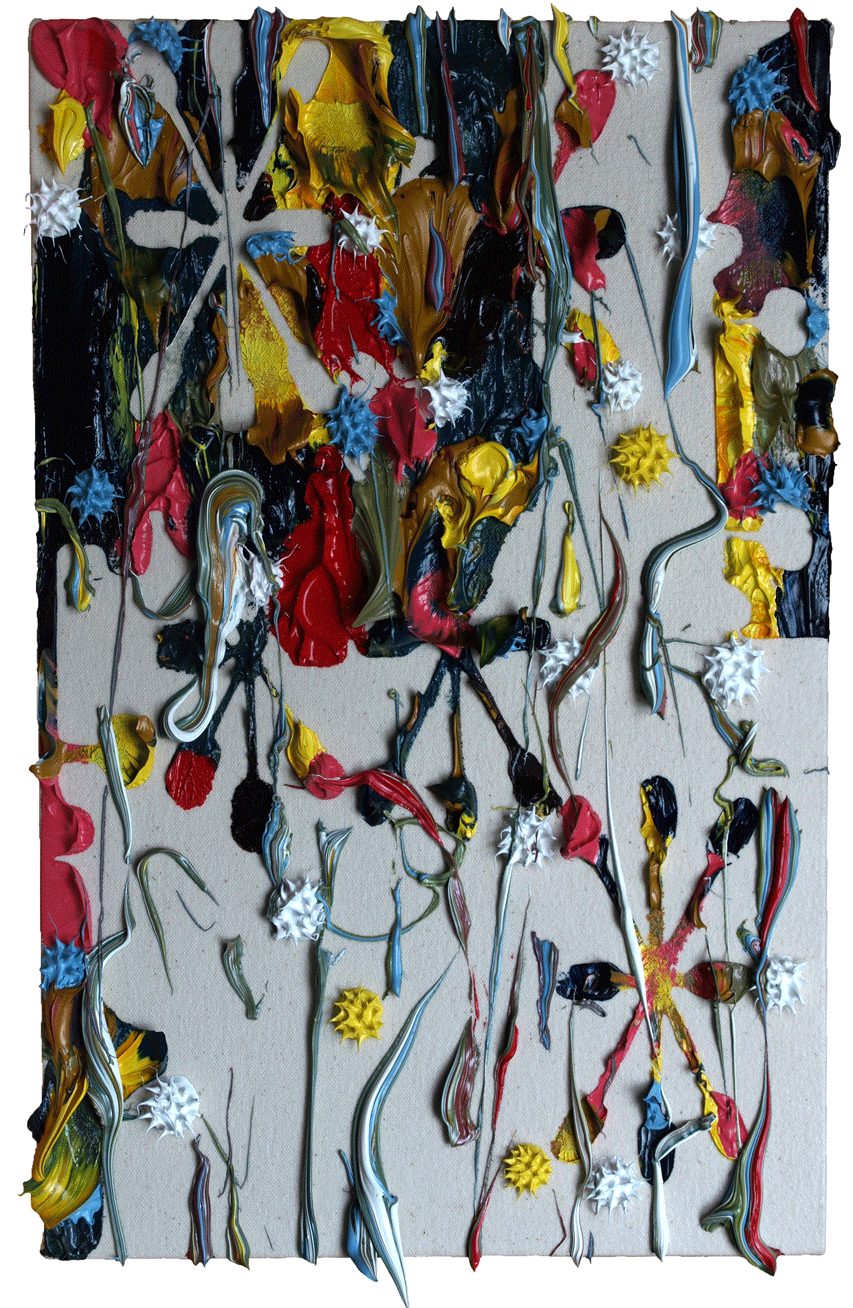
Fidelitas

Little Mica likes to stand guard over the street in front of the studio.
(I'm starting to pull up some slack with this blog. A train of posts to follow.)
July 20, 2015
Bart Exposito
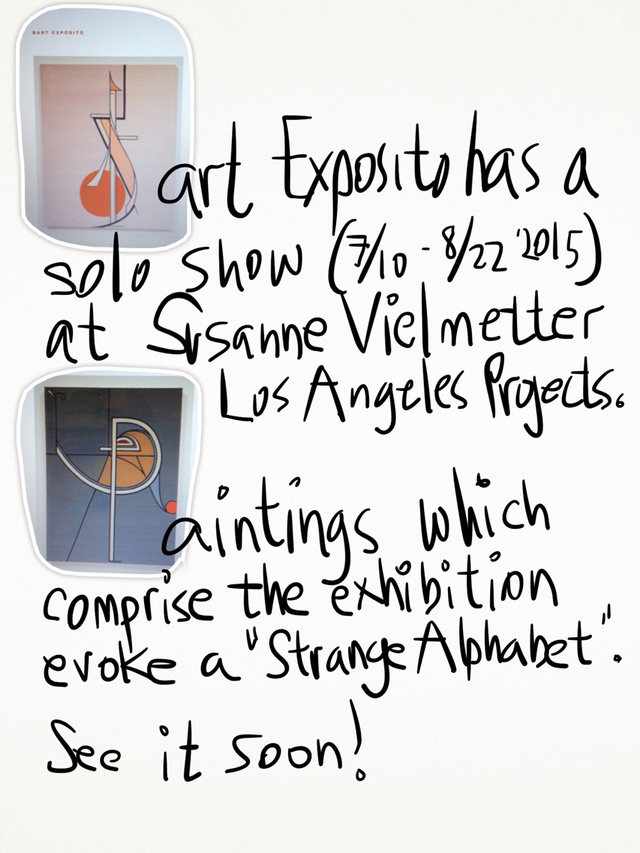
Bart Exposito at Susanne Vielmetter Los Angeles Projects.
(Search the blog for more Bart-ness.)
July 9, 2015
Recent Preoccupations
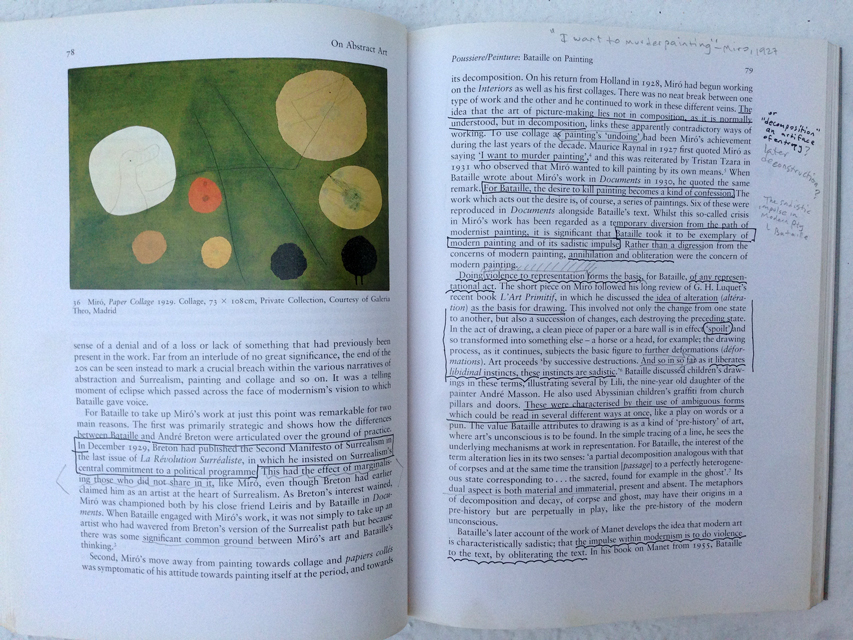
Three notes and comments follow:
1. Before I left NYC, I met up with David Rhodes in Chelsea for a tour of the galleries. Along the way (right after we saw the remarkable exhibit of Lee Lozano at Hauser & Wirth which put her legendary renunciation of art -read: painting- in contrast to a body of astoundingly refined abstract paintings), David mentioned Joan Miro's desire to murder painting. I shouldn't have been surprised by this early statement of the death of painting meme. Instead, I should have been reminded since I had read about this years ago in Briony Fer's "On Abstract Art", a copy of which I have here in Tossa. I picked it up again this summer and took a pencil to add to the annotations that I had already scrawled into the book (I invoke the practice of Nabokov as an authoritative precedent in my defense to potentially horrified book lovers).
Why didn't I internalize this fact into my ideas about the emergence of the postmodern from the high modern (NY school of AbEx painting, late 50's) already? (For a fast reference, see this blogpost, read after "...the hazard we risk") I have held two potentially opposing thoughts aloft and unreconciled. On one hand, the postmodern succeeded the high modern with a deft inversion of its operating principals (where once artists attempted to touch G-d via material means, afterwards they pointed to everyday life via conceptual means). On the other, I have always believed that the modern and postmodern was born Janus-faced as one (this idea bloomed when I read Roger Shattuck's "The Banquet Years", especially when he focused on Jarry's antics), only to diverge completely as the 60's dawned. When I struggled to map the ideological roots of the "death of painting" meme, I should have kept in mind the deep roots of negation in modern art.
2. Late nights in the studio with Paul Berman in the ear buds:
In Western tradition, there exists a place for skepticism and doubt. These two attitudes, skepticism and doubt are elements of faith, the elements that prove the authenticity of belief in G-d. The G-d of the Old Testament instructs Abraham to sacrifice his son Issac, and Abraham doubts the instruction and struggles to resist it for a little while. And Abraham 's doubt and his struggle testify to the sincerity of his belief.-Terror and Liberalism, Paul Berman (2004)
3. Late nights in the studio with Beethoven in the ear buds:
Beethoven, Eroica (The Symphonies of Beethoven, Robert Green, 1996)
From motives, Beethoven develop themes, from these he develops permutations and rhythmic expressions of which these are manipulated and combined with geometric plasticity. Negation (inverted and nested contrary themes) and affirmation (combinatorial and lyrical themes) are in tension and are worked in concert (no pun intended) in his compositions.
Assorted comments:
Joan Miro wanted to murder painting. He ended up growing and amplifying painting.
Andre Breton: "The simplest of surrealists acts is to going down into the street, revolver in hand and shooting randomly into a crowd."
Bataille almost entered the seminary, and afterwards rebelled to carnal depths. After reading the snip from Berman above, one could accept that the extremities of Bataille's imagination was a testament to his sincerity of his (eventual) belief in G-d.
When did we start accepting things only at face value and not for the underlying reality implied? When did we lose touch with the function of artifice in argument?
Weren't Miro and Bataille aware of the artifice of their argument? Of course they were. (Bataille was pushing back on the looming fascism of his time.) Associations, metaphors, images and allusions that were enlisted in Bataille's writing were not meant to be taken literally, even though their indulgence went to extremes. Breton was not radical enough for Bataille. Bataille and his circle of friends once called themselves "Acephale" and went to the brink of voting amongst themselves as to which one was to be beheaded as an expression of the dismemberment that symbolized the violence of collage. They idealized an absolute liberty, past the point of nihilism but as long as this was in service in the realm of art, artifice was pushed to the limit in the service to aesthetics.
Strange that, the instrumentalization of violence for creative ends. The Dadaists were said to have been so repelled by the shock, gore and irrationality of the First World War that they based the aesthetic of the succeeding era on shock, gore and irrationality. Somehow, I can't buy that assertion at face value. The best response to existential exposure is to serve healing and re growth, not to throw a tantrum. Unless that is, carthesis is part of the prescription. Catharsis is __________. Even so, carthesis is but a momentary event, one very hard to sustain in time. Get it out of your system any way you can, but afterwards wash your face and take stock of your situation.
I think that in those post war years both WW I & II, negation was still yoked to affirmation, that George Groz, for example, made wonderful paintings from the most horrific images is only one of a multitude of testaments to the truth of this. This yoke has crumbled in recent art history, and what has remained with us is a peculiar unquestioned idea that art is negation, and only negation.
Painting is wonderful as the closed set that yields the possibility of the open set. In oil painting, you have two opposed and deliberately complimentary material actions: the binding force of oil and the dispersive force of solvent. How was it that some (or even most) of us have come to see only the dispersive force as the only possible future for art?
